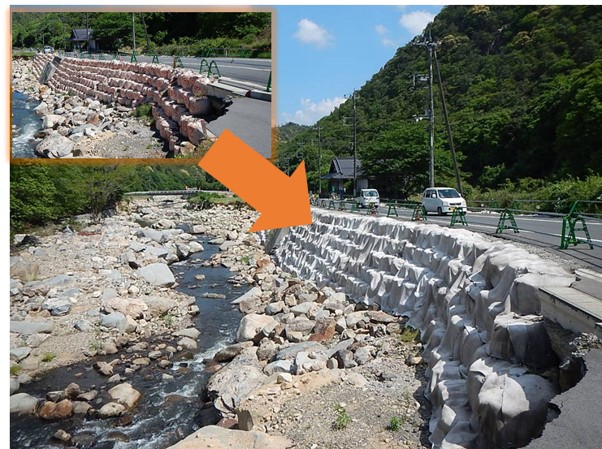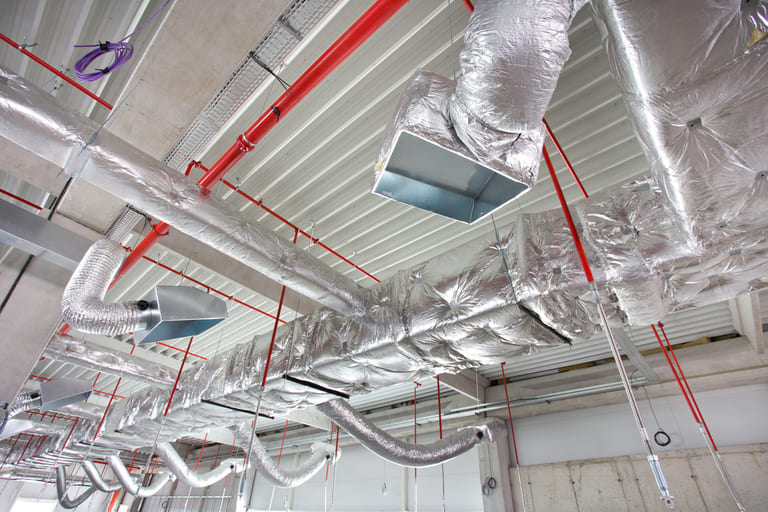

Taiyo Kogyo Column
Thin, durable, and important material that prevents water leakage and supports the environment and people’s lives! Thorough Explanation of Water Barrier Sheets at Civil Engineering Sites
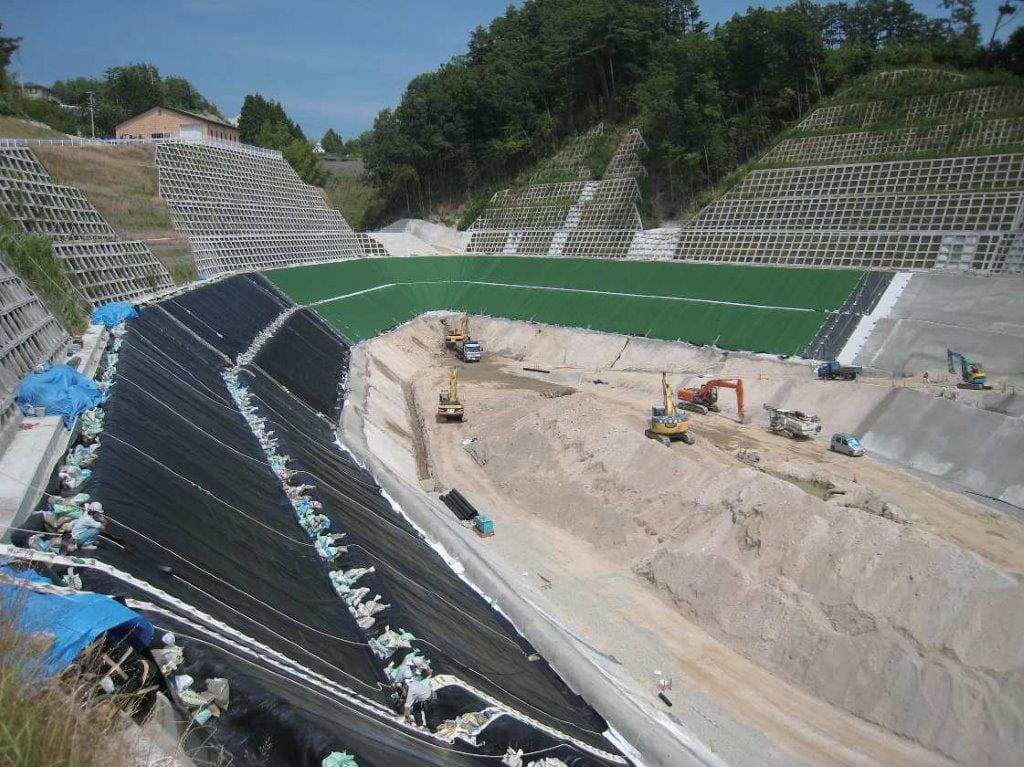
土木現場で広く使用される膜材料として、「遮水シート」というものがあります。これは文字通り水を遮り漏水を防ぐ役割で、色々なところで使われています。身近なところでは農業用ため池など、他にも廃棄物の最終処分場のような、漏水が環境への重大な問題となるような施設でも、その耐久性と信頼性で、周囲の人々の暮らしを支えています。
本記事はそんな「遮水シート」の現場について、写真やイラストを交えて解説をいたします。
About impervious sheets
What is an impervious sheet?
There are many different types of impervious sheets. For example, there are sheets made of rubber, synthetic resins, blends of the two, asphalt, and natural minerals, and a wide range of other materials, ranging from mechanisms that do not allow water to pass through. In this article, we will introduce the most commonly used synthetic resin sheets, their characteristics, and the situation in the field.
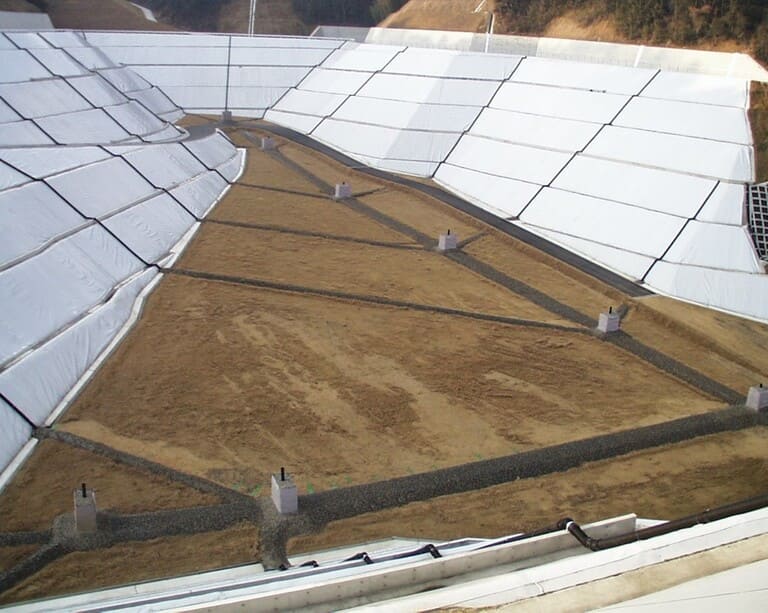
ポリエチレンや軟質塩化ビニルなどでできたいわゆるプラスチック製の遮水シートのことを、合成樹脂系遮水シートと言います。土木用途では一般的に1.5mmの厚さのものが用いられ、特にポリエチレン系シートは、その優れた強度と耐薬品性から、有害物質の封じ込めなど、重要性の高い遮水構造で使われています。
例えば高密度ポリエチレンシートの引張強度は、350N/cm以上。10cm幅の短冊でグランドピアノをぶら下げることが出来るほどの強度を有しています。
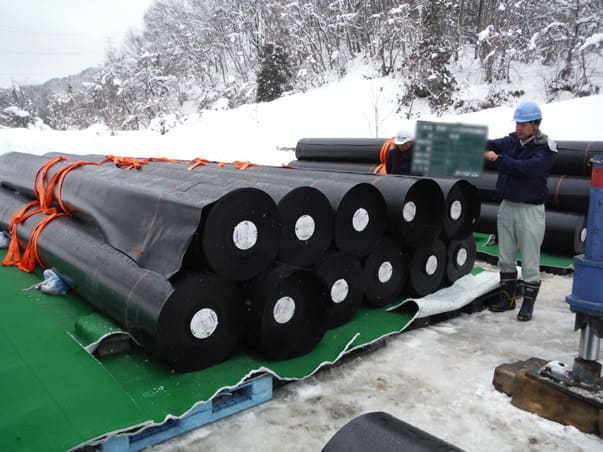
Laying of protective mats
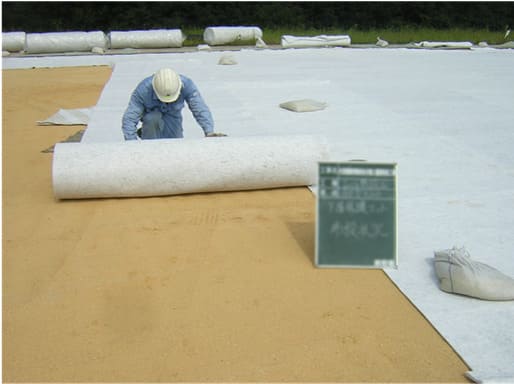
Spreading impervious sheets
Spread the impervious sheet over the protective mat. Several people pull out the rolled sheet, taking care to prevent the sheet from blowing away in the wind. For large-scale construction projects, spreading machines may be used.
The most important point of construction! Jointing of impervious sheets
The most important point in the installation of impervious sheets is the joining of the sheets. Synthetic resin-based impervious sheets have a property called “thermoplasticity,” which deforms when heat is applied. Using a special machine, adjacent sheets of impervious sheets are completely bonded together. The bonding method is called thermo-fusion bonding, and there are two methods of thermo-fusion bonding.
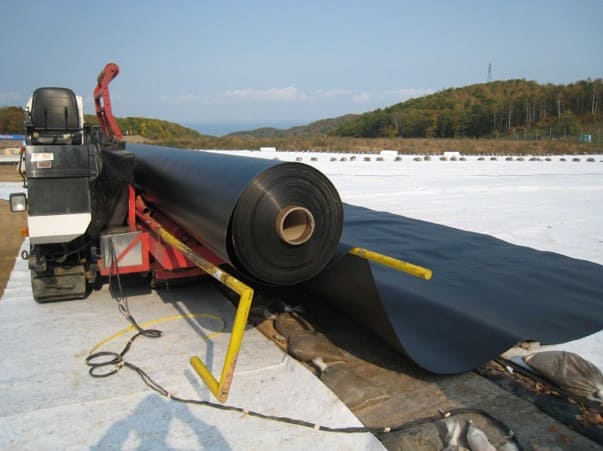
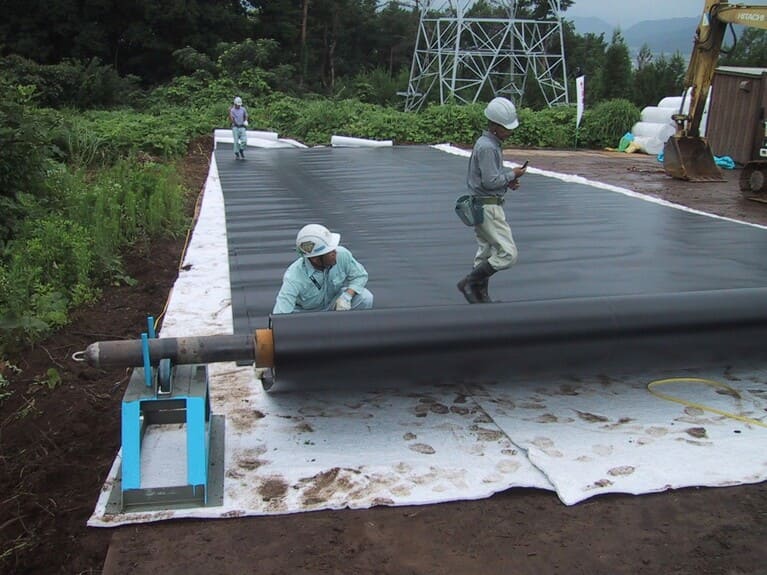
Push welding
Extrusion welding is a heat fusion method used in narrow or complicated locations that are difficult to join by self-propelled fusion welding. First, after removing dust and debris from the sheet surface, the sheet is temporarily fixed with a manual hot air fusion welder (a dryer-like machine that emits hot air at 250-400°C). Then, resin melted by an extrusion welding machine is welded to the temporarily fixed joints. By welding the resin, which is made of the same material as the impervious sheet, as if it is piled up, the sheets can be firmly joined to each other even in narrow and fine areas.
Watertightness inspection of joints Pressure test
Now the sheets are joined together. However, it is important to check for a reliable watertightness. In this issue, we will introduce an inspection method called “pressure inspection.
The cross section of a sheet joined by the aforementioned “double seam” self-propelled fusion splicer has a cavity (inspection hole) in the center. The pressure test is a watertightness inspection method using this inspection hole.
First, both ends of the joint are closed with a clamp to prevent air leakage from the cavity. Then, a special needle-shaped nozzle is inserted into the inspection hole and air is pumped through it. When the air pressure reaches a certain level, the nozzle valve is closed and the unit waits for 30 seconds. If no pressure is lost beyond a certain point, no air leakage = a leak-free joint has been made. The air pressure and inspection criteria at this time are defined by the type of sheet. A major advantage of synthetic resin-based waterproof sheets is that they can be double-seam thermally fused, and water tightness can be confirmed by inspection using these objective indicators.
Once the inspection of the joints is completed and the protective matting of the upper layer is laid, the impervious sheet construction is almost complete.
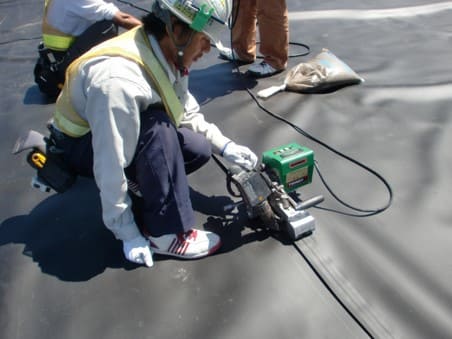
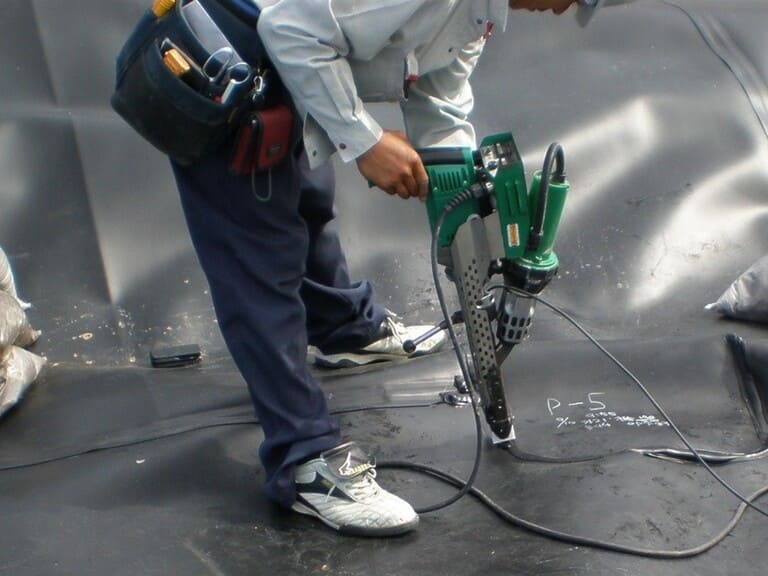
Let's use sheets with inspection functions.
In addition to the inspection methods introduced above, there are also sheets that can be inspected using electricity, called “spark inspection,” by applying a special process to the sheet itself. The enhancement of inspection methods will reduce the risk of leakage at joints.

上にあげている広幅生成の遮水シートや、検査機能付きシート、軟質塩化ビニルシートから高密度ポリエチレンシートやその他樹脂シートも含めた様々なラインナップを太陽工業では設計から施工までご提供しています。
規模や用途、予算など、その現場に応じた最適な遮水シートやその構造は様々な要素により変わってきます。例えばコンクリートの躯体への固定が必要なとき、例えば管の貫通部が出てきてしまうとき……。廃棄物最終処分場の国内トップクラスの実績で培った技術や経験と、専用のアプリケーションも交えた多彩なご提案で、よりご満足のいただける遮水構造を作り上げます。
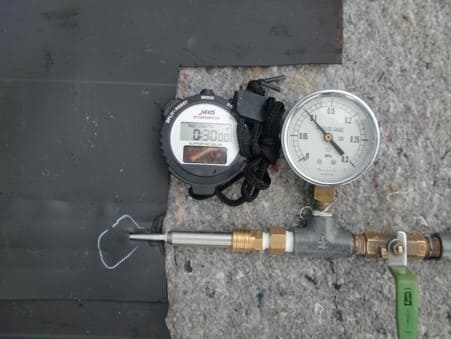
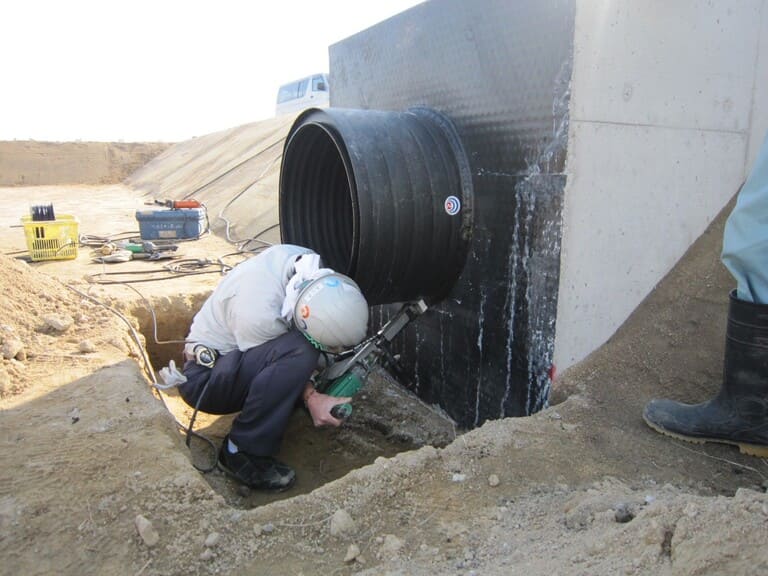
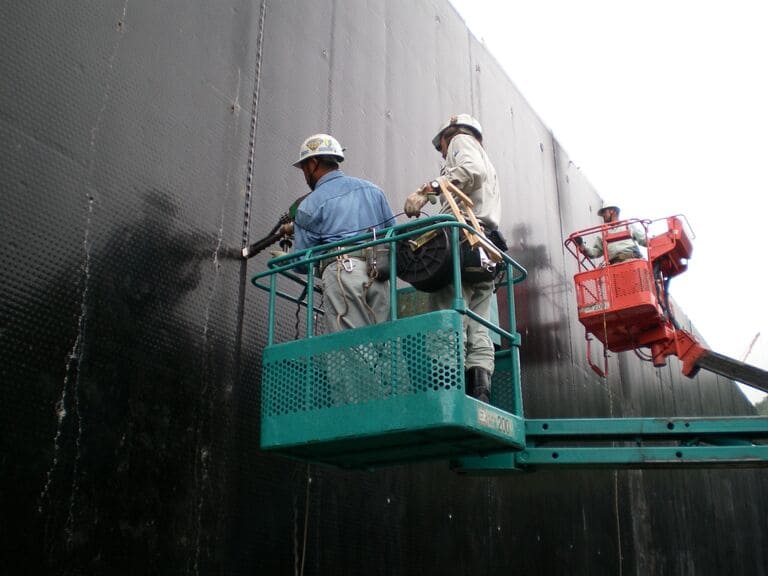
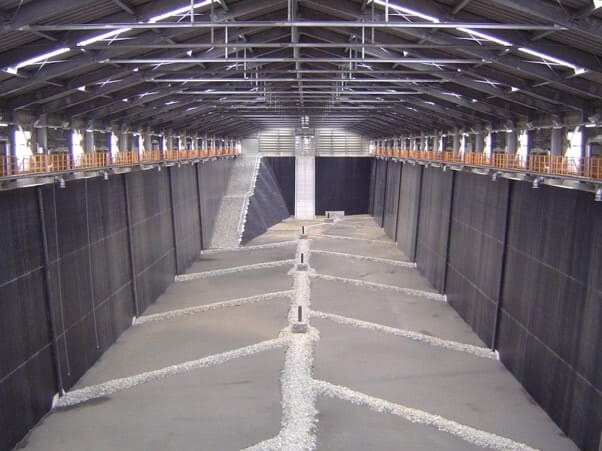
Related Articles
- TOP>
- Taiyo Kogyo Column>
- Thin, durable, and important material that prevents water leakage and supports the environment and people’s lives! Thorough Explanation of Water Barrier Sheets at Civil Engineering Sites






